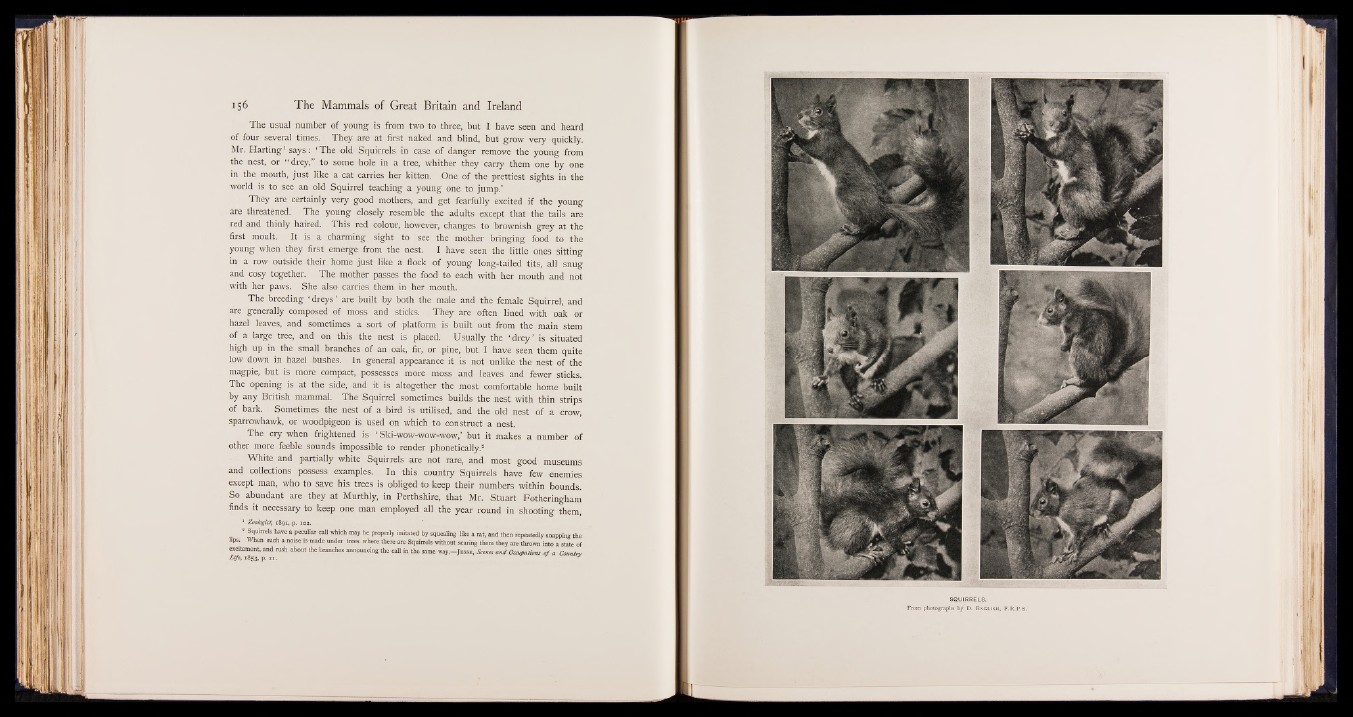
The usual number of young is from two to three, but I have seen and heard
of four several times. . They are at first naked' and blind, but grow very quickly.
Mr. Halting1 says.: ‘ The old Squirrels in case of danger remove the young from
the nest, or "drey," to some hole in a tree, whither they carry them one by one
in the mouth, just like a cat carries her kitten. One of the prettiest sights in the
world is to isee an old Squirrel teaching a young one to jump.’
Thèy are certainly very good mothers, and get fearfully excited if the young
are threatened. The young closely resemble the adults except that the tails are
red and thinly haired. This red colour, however, changes to brownish grey at the
first moult. It is a charming sight to ‘see the mother bringing food to the
young when they first emerge from the nest. I have seen the little ones sitting
in a row Outside their home just like a flock of „young long-tailed tits, all snug
and cosy together. The mother passes the food to each with her mouth and not
with her paws. She also carries them in her mouth.
The breeding ‘ dreys ’ are built by both the male and the female Squirrel, and
axe generally composed of moss and stM«#: They are often lined with oak or
hazel leaves, and sometimes a sort of platform is built out from the main stem
of a large tree, and on this the nest is; placed. Usually the ‘ drey’ is situated
high up in the small branches of an oak, fir, or -pine, but I have seen them quite
low down in hazel bushes, In general appearance it is not unlike the nest of the
magpie, but -is more compact, possesses more moss and leavés and fewer sticks.
The opening is at the side, and it is altogether the most comfortable home built
by any British mammal. The Squirrel sometimes builds the nest with thin strips
óf bark. Sometimes thé nest lof ia bird is utilised, and the old nest of a crow,
sparrowhawk, of woodpigeon is used on which to construct a nest.
The cry when frightened is ‘ Ski-wow-wow-wów,’ but it makes a number of
other more feeble sounds impossible to render phonetically.2
White and partially white Squirrels are not rare, and most good museums
and collections possess examples. In this country Squirrels have few enemies
except man, who to save his trees is obliged to keep their numbers within bounds.
So abundant are they at Murthly, in Perthshire, that Mr. Stuart Fotheringham
finds it necessary to keep one man employed all the year round in shooting them,
1 Zoologist, 1891, p. io2.
2 Squirrels have a peculiar call which may be properly imitated by squealing like a rat, and then repeatedly snapping the
bps. When such a noise is made under trees where there are Squirrels without scaring them they are thrown into a state of
excitement, and rush about the branches announcing the call in the same way.—J esse, Scenes and Occupations o f a Count,rv
L ift, 1853, p. 21.